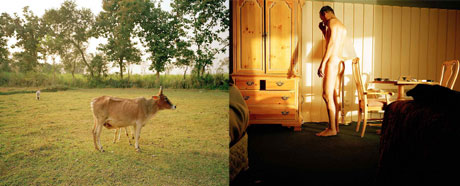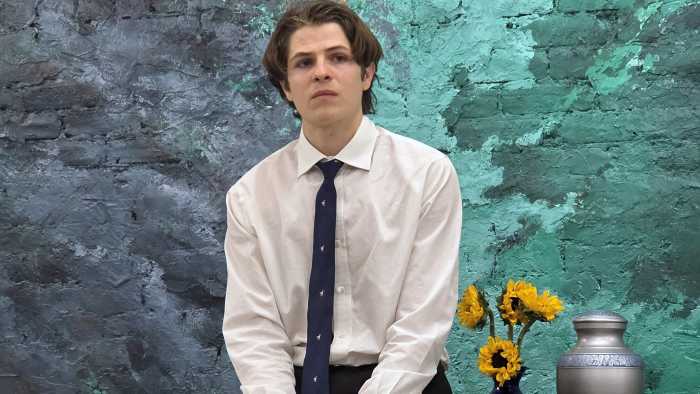A gay Briton from India poses the lens to find some answers
Whatever happened to identity politics? Ten years ago, artists were producing work that deliberately addressed what they looked like, who they slept with, where they were born, and what passport they carried. The identity practitioners exercised a strong influence on how the art world not only thought about, but also acted upon, issues like commercial marketing, otherness, privilege, and citizenship.
The work of artists that followed has been more abstract on these topics, if addressing them at all, leading many in the art world to question the reach and longevity of that critical introspection.
In light of that, it’s startling and pleasing to see a show mounted under the title “Identity,” that includes the work of Sunil Gupta, an artist who is one of the original voices from the identity politics era. As an artist, Gupta remains concerned with his own forced peregrinations as a consequence of white European imperialism.
The “Homelands” collection, on exhibit at Sepia International Gallery through March 20, consists of large-scale photographs that pair images from Gupta’s life.
A gay, HIV- positive man born in India, raised in Canada, and now residing in Britain, Gupta pairs photographs in his exhibit to draw attention to the multiple geographic, cultural and, in the case of his HIV status, medical categories by which he self-identifies.
“I wanted to connect the places I have an affinity with: northern India, the northeastern part of the USA, and the eastern part of Canada. These places had been homes to me over the years and I wanted to make work about the journeys traveled between them,” Gupta explains in a statement accompanying “Homelands.”
The photographs have a postcard quality to them, but are deceptively scenic, offering a different interpretation of the term “homeland security.”
One piece is made up of split images of a cow in a verdant field in India and of Gupta standing beside a polished cedar armoire in what looks to be a hotel room. Nude and with his back turned to the lens, Gupta is captured pinching the bridge of his nose as if he’s trying to gather a thought. Perhaps he is wincing from the side effects of anti-retroviral medication?
Bright, mid-afternoon sunlight illuminates the background in both shots, which serves to unite the two images on the one canvas to elucidate what is being said.
In India, Hindus protect the sacred cow from slaughter. In London, Gupta stays alive on state-funded drugs that battle HIV. The scenic, picture-postcard calm of the work is thus shattered.
In another pairing, a photograph taken along the Thames is juxtaposed with one of a statuette of the Hindu god Shiva. In the London scene, a bright yellow “Crime Stoppers” billboard appeals to witnesses of a gay bashing to come forward. Parliament stands in the background. The sky is a serene pastel blue which matches the color of a passing bus. Cross the canvas’ median and the colors in the portrait of Shiva are exactly the same, pleasant blues and yellows. But the beauty of the image is disrupted when the identity of the subject is exposed. In Hindu cosmology, Shiva is the god of destruction.
Gupta, in a clear suggestion that it is the only uncontested home he has known, uses his own naked body in his work, a motif that was popular among artists––particularly queer ones––who explored identity politics.
Notably, even within that body, he is forced to stave off foreign invaders.



































